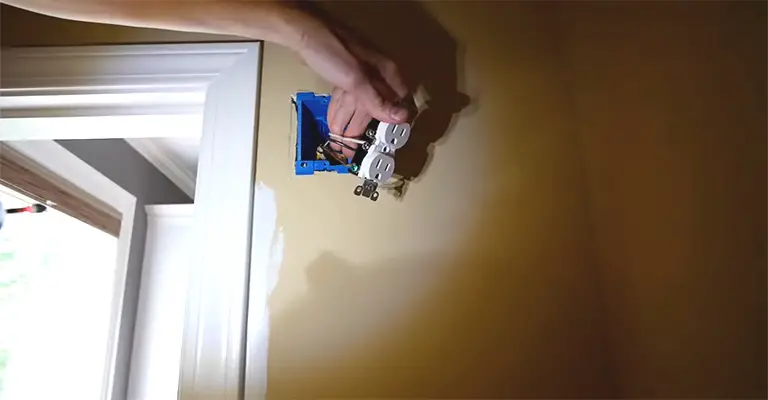How to Keep Cats Off the Counter: Dealing with Your Feline Friend
Are you tired of finding your furry companion on your kitchen counter? Finding an effective solution to keep cats off the counter can be challenging, but don’t worry, we’ve got you covered. In this article, we’ll guide you through several effective methods to ensure your counters remain a cat-free zone.
For cat owners, it’s not uncommon to find our feline friends exploring places they shouldn’t. The kitchen counter, given its elevated position and accessibility to food, becomes a prime target. However, cats on countertops aren’t just inconvenient – it can be unhygienic and pose safety risks. Let’s delve into some tried-and-tested methods to discourage this behavior.
Understanding the Cat’s Perspective
First, it’s crucial to understand why your cat is attracted to the counter. Cats are natural climbers who enjoy high vantage points, and the kitchen counter provides just that. It may also be a source of interesting smells and tastes. By understanding their motivations, you can offer alternative solutions that meet their needs while protecting your countertops.
Create Alternative High Spaces
Cats love high perches; it gives them a sense of safety and control. Provide cat trees, shelves, or high perches in your living area to give your cat an appropriate place to observe their environment. Make these alternative spots more enticing by placing their favorite toys or treats there.
Make Counters Unappealing
If the counter is less appealing, your cat will be less inclined to jump on it. One way is to keep the counter clean and free from food scraps. You can also use safe deterrents like aluminum foil or double-sided tape, which cats dislike. A product called “ssscat spray” emits a harmless, cat-deterring puff of air when it detects movement, providing an excellent deterrent without causing harm.
Use Positive Reinforcement
Reward your cat when they use their designated high spaces instead of the counter. The rewards could be in the form of treats, affection, or playtime. Positive reinforcement strengthens desirable behaviors over time, making it a powerful tool in your cat-behavior-modification toolbox.
Train with Commands
Training your cat to understand specific commands like “off” can be beneficial. When your cat jumps on the counter, calmly say the command, then gently place them on the floor. It’s important to be consistent and patient, as cats can take time to learn new behaviors.
Protective Barriers
Consider using baby gates or pet pens in your kitchen entrance to prevent your cat’s access, especially when you’re not around. This might be more applicable in homes with open-plan kitchens.
Never Punish Your Cat
Remember, punishing your cat is counterproductive and could lead to fear or aggression. Instead, focus on creating an environment that meets their needs while also setting boundaries.
Additional Tips for Keeping Cats Off the Counter
For those struggling with this common cat-related conundrum, here are some additional techniques you can try.
Utilize Cat-Repelling Scents
Cats have a heightened sense of smell and there are certain scents they generally find unpleasant. Citrus fruits, such as oranges or lemons, for example, are known to repel cats. Try placing some citrus peels on your counter or using a citrus-based spray. Likewise, a natural spray made from essential oils like rosemary or eucalyptus can also deter cats. However, always ensure any scents or products you use are safe for cats.
Distraction Technique
If you notice your cat about to jump onto the counter, distract them. Toss a toy or engage them in play away from the kitchen. Over time, your cat will associate their urge to leap with playtime in a more appropriate location.
Use Cat-Proof Covers
You could consider using cat-proof covers for times when your counter needs to be left unattended. These are typically lightweight and can be easily placed over the counter surface to deter your cat.
Involve a Professional
If all else fails and your cat’s countertop expeditions continue unabated, don’t hesitate to seek professional help. Animal behaviorists or professional cat trainers can provide personalized advice and strategies based on your cat’s specific behavior and personality.
It’s important to remember that consistency is key when discouraging any unwanted cat behavior. Techniques should be applied regularly to reinforce the boundaries you’re setting. It may take some time, but with patience and understanding, you’ll find a strategy that works for both you and your feline friend.
Remember, cats are naturally curious and exploratory creatures. Try to channel these instincts into safe and acceptable behaviors rather than trying to eliminate them. With the right balance, you can maintain a happy, healthy relationship with your cat while also keeping your kitchen counters free from feline interference.
Conclusion
In the world of pet ownership, the conundrum of why cats jump onto kitchen counters is a common one. Fortunately, with a solid understanding of cat behavior and the right strategies, you can efficiently keep your cat off the counter. From providing high alternatives like a cat tree or cat tower to keeping the litter box clean to discourage exploratory hops, you can redirect your feline companion’s behavior to more appropriate areas. Also, remember that most cats hate certain textures and smells, which you can use to your advantage.
Using a spray bottle, although often suggested, is not the most effective method and could create fear rather than understanding. Instead, focus on creating an environment that satisfies your cat’s natural instincts while setting clear boundaries. If you have multiple cats, be patient, as each cat may respond differently to these strategies. Remember, every cat is unique.
In conclusion, keeping your cat – or multiple cats – off the kitchen counter is achievable with patience, understanding, and the right tactics. By providing alternatives and making counters unattractive, you can satisfy both your needs and your cat’s desires. This mutual understanding will surely strengthen your bond with your feline companion and lead to a harmonious cohabitation. Remember, the aim is not to curb the curiosity that makes your cat unique, but to guide it in a way that ensures safety, cleanliness, and peace of mind in your home.





